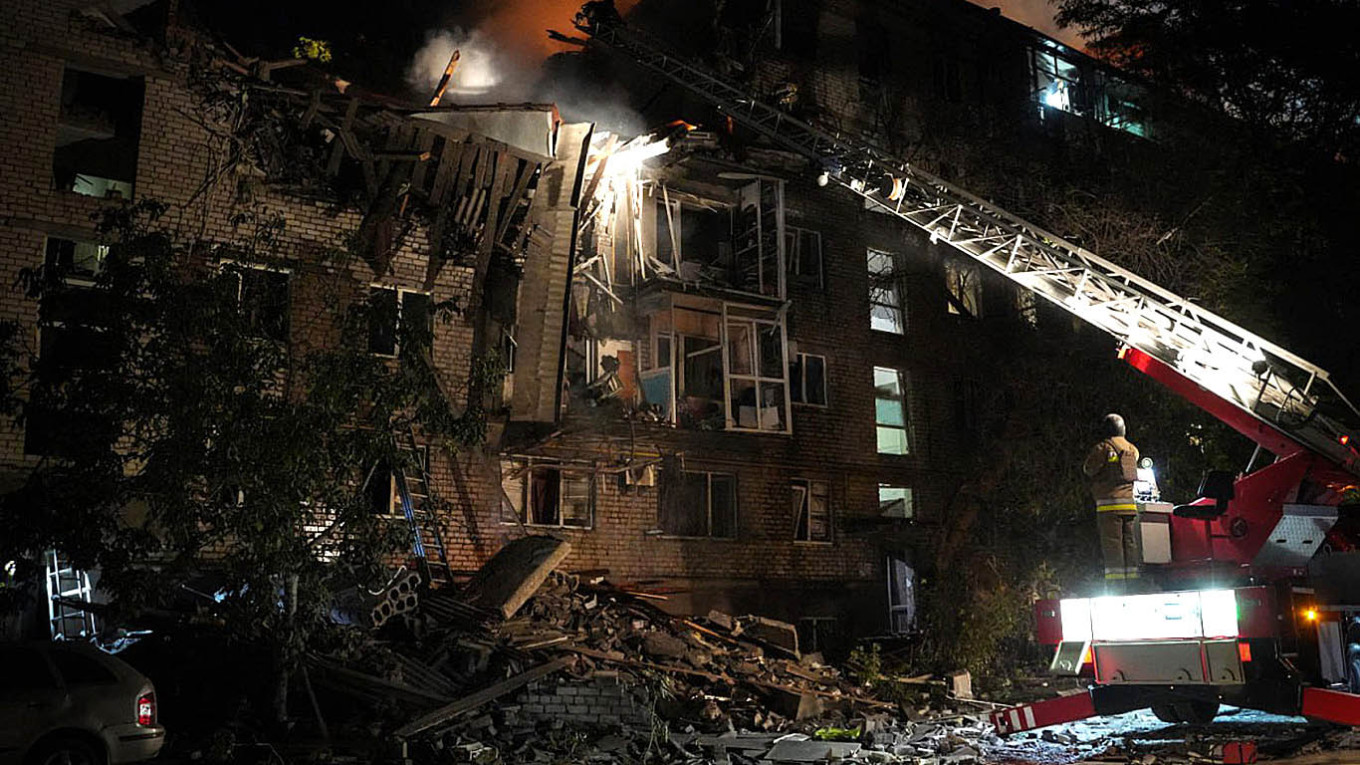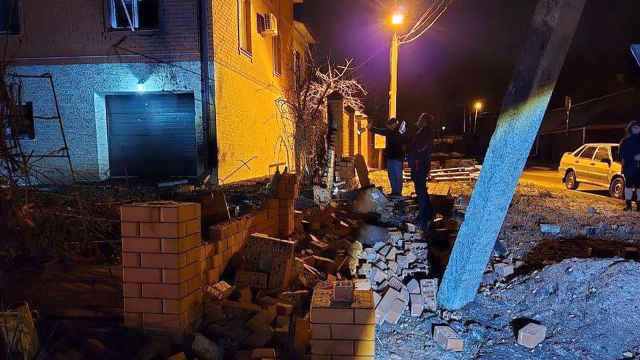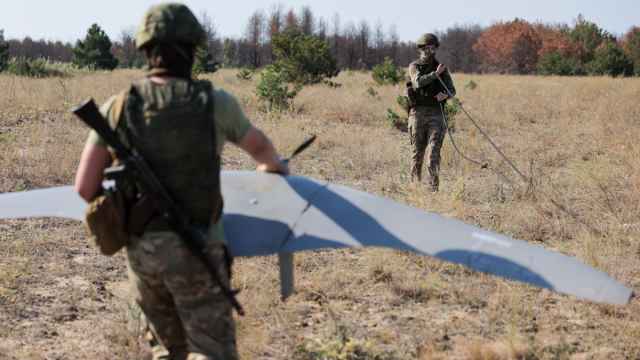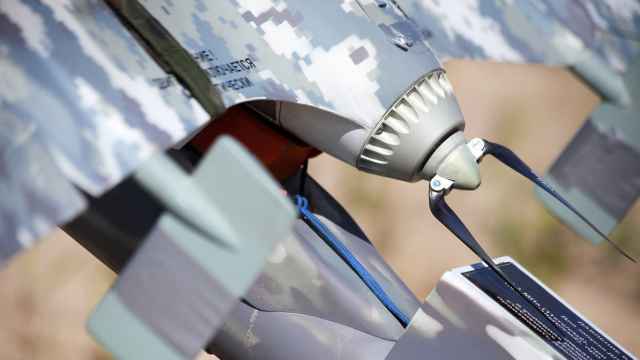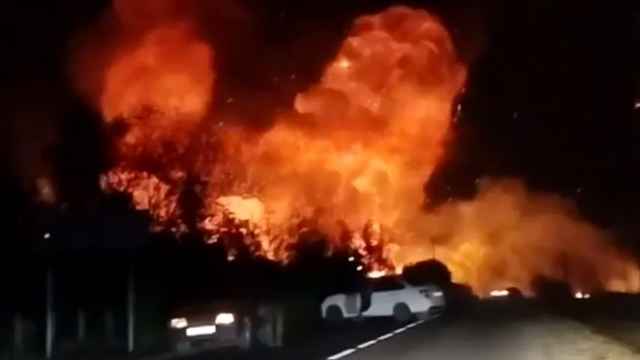Russia fired its biggest-ever drone barrage on Ukraine on Monday, Kyiv said, escalating a deadly air campaign that analysts say offers little military value and instead appears intended to erode civilians’ morale.
While large-scale Russian drone attacks have pummeled Ukraine’s cities for three consecutive nights, Ukrainian drones have targeted infrastructure and military sites deep into Russia’s territory.
Intensified attacks
Russia fired "355 Shahed-type drones" including decoys, as well as nine cruise missiles, between Sunday night and early Monday, in the largest drone attack of the invasion so far, Ukraine's Air Force said.
An attack on Sunday killed 13 civilians, including three children from the same family, in the central Ukrainian city of Zhytomyr.
Following the strikes, President Volodymyr Zelensky called for more pressure on Moscow.
"Russian strikes are becoming increasingly brazen and large-scale every night," Zelensky said in his daily address, adding that some 900 drones and missiles were launched at Ukraine in the last three days.
Military analyst Alexei Alshansky said that although the scale and frequency of Russia's drone attacks have increased recently, their strategic utility remains questionable.
"There's no military objective behind ramping up drone strikes on Ukrainian cities — these kinds of attacks offer no strategic advantage to the Russian army,” Alshansky told The Moscow Times. “Those drones aren't targeting military facilities and are completely indiscriminate.”
“This is about inflicting fear and psychological pressure on civilians — to push the Ukrainian side into making some concessions during a pseudo-peace negotiation process,” Alshansky said, adding that the latest attacks didn’t appear coordinated with any precision missile strikes, suggesting no tactical advantage was gained.
Military analyst Yury Fedorov shared a similar view.
“It’s a consistent tactic by Russia aimed at influencing public opinion — not targeting military or even economic sites, but public sentiment [in Ukraine],” Fedorov told The Moscow Times.
“Ukrainian strikes, by contrast, are mainly directed at military and military-industrial targets, which is understandable. There is no ‘eye for an eye’ policy,” Fedorov said.
Russia's concern about its vulnerability to drone warfare does appear to be growing.
Moscow on Tuesday accused Kyiv of increasing its air barrages in an attempt to disrupt peace talks and said that its massive assaults on Ukraine were a "response" to Kyiv’s drone attacks on Russia.
Russia’s Defense Ministry said Tuesday it had intercepted 99 Ukrainian drones overnight, with the largest number — 56 drones — downed over the Belgorod border region.
The republic of Tatarstan also came under drone attack on Monday, according to Russian Telegram channels. Air defenses were operational in the city of Yelabuga, where Russia assembles combat drones used in its war against Ukraine.
The same day, Ivanovo regional authorities reported that four drones were destroyed in the region. Telegram channels Mash and Astra said the drones targeted the Dmitrievsky Chemical Plant in the Kineshma industrial zone, which reportedly manufactures components for Russian military equipment and weaponry.
Several Russian regions, including Yaroslavl, Vladimir, Ivanovo, Oryol, Lipetsk, Tula and Voronezh, also reported temporary mobile internet shutdowns following the drone attacks this month.
The capital Moscow faced mobile internet disruptions during the May 9 Victory Day celebrations, and flight cancellations at airports due to drone attacks have become a regular inconvenience across the country.
Changing tactics
Amid the increased attacks, Ukraine warned it was becoming difficult for its air defenses to counter the sheer number of drones Moscow was firing.
"We need rational and cheaper ways to shoot them down," Ukraine’s Air Force spokesman Yuriy Ignat said.
A Ukrainian military source told AFP that Kyiv was "somehow fighting" with available air defense capabilities and that there was "no need to panic," but added that Kyiv “needs deliveries of Western weapons” to keep resisting the assaults.
Beyond attempting to overwhelm Ukrainian air defenses with huge numbers of drones, Russia’s drone tactics also appear to be evolving, Ivan Stupak, a military expert and former officer of Ukraine’s security services, told The Moscow Times.
“Drones are becoming increasingly sophisticated tools for both killing and exhausting air defense systems,” he said.
Ukrainian Air Force spokesman Ignat said that Moscow was constantly changing the routes of its drones and trying to launch them at high altitudes, making them harder to intercept.
Another tactic, he said, involves launching multiple drones at a single target — such as a town or facility — or using unarmed drones to overwhelm and distract air defense systems.
An article published by The Economist on Sunday also claimed, citing a group of Ukrainian engineers, that Russia’s newest drone models were “unfazed” by Ukraine’s electronic warfare, as they no longer relied on jammable GPS and were driven by artificial intelligence. The article said that drones were being controlled via Telegram bots that transmit flight data and video feeds in real-time.
Military experts, however, have questioned these claims.
Ukrainian electronic warfare specialist Serhii Beskrestnov, also known by the pseudonym Serhii Flash, dismissed the article as misleading.
“Russian Shaheds are not controlled in flight via Telegram and do not send video broadcasts somewhere via Ukrainian mobile networks,” he said, adding that “Shaheds do not have AI inside” and “still fly based on satellite navigation signals and jamming affects them.”
Military analyst Alshansky also said that “integrating AI into drones would be expensive, and if such systems were used, we would likely have seen undeniable proof in the debris — sophisticated onboard devices, for instance.”
But some primitive automation is possible, he explained, adding that the reduced effectiveness of Ukrainian electronic warfare systems against some drones might suggest the use of more advanced defense technologies that provide greater resistance to jamming.
“Instead of simply flying to GPS coordinates, a drone could theoretically compare what it sees below with a satellite image of its target. That would be a form of automated navigation — a prototype version of AI, if you will,” Alshansky said.
AFP contributed reporting.
A Message from The Moscow Times:
Dear readers,
We are facing unprecedented challenges. Russia's Prosecutor General's Office has designated The Moscow Times as an "undesirable" organization, criminalizing our work and putting our staff at risk of prosecution. This follows our earlier unjust labeling as a "foreign agent."
These actions are direct attempts to silence independent journalism in Russia. The authorities claim our work "discredits the decisions of the Russian leadership." We see things differently: we strive to provide accurate, unbiased reporting on Russia.
We, the journalists of The Moscow Times, refuse to be silenced. But to continue our work, we need your help.
Your support, no matter how small, makes a world of difference. If you can, please support us monthly starting from just $2. It's quick to set up, and every contribution makes a significant impact.
By supporting The Moscow Times, you're defending open, independent journalism in the face of repression. Thank you for standing with us.
Remind me later.



